Collapse characteristics and influencing factors of wind-blown sands in the southern margin of Mu Us Desert, Yulin, Shaanxi Province
-
摘要:
随着中国干旱、半干旱地区的开发与发展,湿陷性沙土对工程建设的危害日益显著。为探明沙土的湿陷规律及其影响因素,文章以毛乌素沙漠南缘风积沙土为研究对象,首先,通过控制单因素室内压缩试验,研究不同工况下风积沙的湿陷规律;其次,采用 PFC3D(三维颗粒流软件)对风积沙土室内压缩试验进行数值模拟,探究不同孔隙率、不同颗粒组成对沙土湿陷性的影响。研究结果表明:沙土湿陷系数随压力呈先升后降的变化趋势,压力为 150 kPa 时取得湿陷系数最大值;随着干密度或含水率的增大,沙土湿陷系数减小。相较于含水率,干密度对沙土湿陷性的影响更大;风积沙土的湿陷系数与孔隙率之间呈正相关关系,毛乌素沙漠南缘风积沙土的湿陷起始孔隙率为 0.425;当 0.075~0.25 mm、0.25~0.5 mm两粒组颗粒含量之比为 0.35∶0.65 时,沙土湿陷性最大。研究结果较全面地描述了沙土室内压缩试验从宏观到微观的全过程,从多尺度揭示了沙土湿陷性的湿陷规律及其影响因素,可为毛乌素沙漠地区工程建设提供参考,同时为沙土在颗粒流数值模拟方面的研究提供了一定的思路和依据。
Abstract:With the development of arid and semi-arid regions in China, the hazards posed by collapsible sands to engineering construction have become increasingly significant. In order to investigate the collapsibility regularity and its influencing factors of sand soils, this paper focuses on the wind-blown sands at the southern edge of the Maowusu Desert. Initially, by controlling the single factor laboratory compression tests, the collapsibility regularity of wind-blown sand under different working conditions was investigated. Subsequently, using PFC3D (three-dimensional particle flow software) for numerical simulation of the laboratory compression tests on wind-blown sands, the paper explores the effects of different porosities and particle compositions on the collapsibility of sandy soils. The research results indicate that the collapsibility coefficient of sandy soils shows a trend of first increasing and then decreasing with pressure, reaching its maximum value at 150 kPa. With the increase in dry density or moisture content, the collapsibility coefficient of sand decreases. Compared to moisture content, dry density has a greater impact on the collapsibility of sandy soils. There is a positive correlation between the collapsibility coefficient of wind-blown sand and its porosity. The initial porosity of the collapsibility of the wind-blown sand on the southern edge of the Maowusu Desert is 0.425. When the ratio of particle content between 0.075~0.25 mm and 0.25~0.5 mm is 0.35∶0.65, the collapsibility of sandy soils is maximized. The research results comprehensively describe the entire process of laboratory compression tests on sand from macro to micro levels, revealing the collapsibility regularity and its influencing factors on wind-blown sand from multiple scales. This can provide a reference for engineering construction in the Maowusu Desert and provide certain ideas and basis for the research on particle flow numerical simulation of sand.
-
0. 引言
森林火灾是林区常见自然灾害,其不仅对生态环境质量和人类健康安全构成严重威胁,且火烧迹地在降雨条件下,极易发生泥石流灾害,这种与林火密切相关的泥石流通常被称为“火后泥石流”(post-fire debris flow)[1-3]。火烧迹地发生泥石流的概率会大幅度提高,CANNON等[4]2000年对加利福尼亚南部86个火烧迹地调查发现,约35%的火烧迹地会发生火后泥石流灾害,CANNON等[5]2001年得出约40%(37/95)的火烧迹地发生了泥石流灾害。与常规泥石流相比,火后泥石流呈现集中高频暴发[6]、降雨阈值极低[7-8]、受到火烧严重程度[9]的影响等特点[10],且起动机理也有显著区别,SANTI等[11]2008年发现火后泥石流主要由地表径流引发,GABET等[12]2008年也指出森林植物灰烬具有提高地表径流容积和运输能力的作用,任云[13]2018年基于Fuzzy-AHP建立了适用于火后泥石流的危险性评价模型。由于火后泥石流独特的发育特征与成灾机理,常规泥石流的危险性评价模型和预警避险方案适用性较差,因此建立针对火烧区火后泥石流的降雨阈值,在此基础上形成基于火后泥石流暴发降雨阈值、实时雨量监测数据与群测群防于一体的预警避险方案,对火后泥石流科学防灾具有重要意义。
1. 喜德县中坝村火烧区概况
1.1 地质环境特征
喜德县地处川西高原南段,属典型亚热带西南季风和高原气候,呈现出既有高原干燥气候、又有充沛降雨的特点。区内年平均气温约14.1 ℃,多年平均降雨量1000 mm,日最大降雨量164.3 mm。5—10月为雨季,降水过程多为强降雨、连阴雨、多夜雨,雨季降雨量占全年总降雨量的93%左右,且山区气候垂直分带十分明显,海拔每增高100 m,降雨量增加约30 mm。
发生于2020年5月7日森林火灾区位于凉山州喜德县鲁基乡中坝村一组(图1),地势北高南低,山岭海拔2050~3505 m,山区地形切割深度较浅,属构造侵蚀低中山地貌区。岩性主要为花岗岩为主,第四系全新统残坡积层主要为含块(碎)石的粉质黏土。区内因白昼以及垂直高度不同气温变化较大,地表风蚀作用强烈,岩石风化十分严重。
1.2 火烈度特征及空间分布
火烧区植被类型以云南松和常绿阔叶林为主,火灾后火烧迹地植被遭受严重破坏,覆盖率明显降低,采用多光谱遥感数据中两个波段所构建的监测指数如dNBR(the delta Normalized Burn Ratio)可以准确检算森林火烧地区的过火面积、边界及火烧程度[14-16]。本文通过Envi软件对事发地火烧前后(分别是2020年4月1日及2020年5月12日)多光谱卫星遥感图像(20 m精度)进行解译,并结合现场调查情况判断火烧面积、边界及不同区域的火烧强烈程度。火烈度遥感解译后的图像通过软件处理,可统计出火烧迹地范围内不同火烈度区面积占比,以及每条沟道流域内高烈度火烧区(中度及重度火烈度区)的面积占比。
基于PERSON等[17]提出的不同强度火烧判别特征表1,对中坝村后山火烧迹地不同火烈度区域通过遥感图像解译并结合现场实地调查,根据火烧迹地植被被烧毁程度、灰烬层厚度等特征,将火烧迹地的林火烈度分为重度、中度、轻度与未火烧四个等级。
表 1 中坝村后山火烧迹地不同强度火烈度判别特征Table 1. Distinguishing characteristics of fire intensity of different intensity in Zhongba Village burned area火强度 特点 未火烧 火烧前后地表覆盖物无变化 轻度火烧 超过50%的枯枝落叶未完全燃烧 中度火烧 大部分枯枝落叶被烧毁,但是大部分粗可燃物未完全燃烧 严重火烧 枯枝落叶和粗可燃物均被完全烧毁,地表为灰烬覆盖 根据火烈度判别标准,中坝村后山火烧迹地不同火烈度分区及相应重度、中度、轻度与未火烧区,各分区见图2、图3。
结果表明,中坝村后山森林火灾总过火面积约6.7 km2,其中重度火烧区占比65.93%、中度火烧区占比19.76%、轻度火烧区占比14.31%,中坝村后山1#~4#沟流域内中度及重度火烧区面积占比均超过90%(表2)。
表 2 中坝村森林火烧区不同火烈度面积占比数据统计Table 2. Statistics on the proportion of different fire intensity areas in the forest fire area of Zhongba Village/% 火烧区 轻度火烈度区面积占比 中度火烈度区面积占比 重度火烈度区面积占比 中度及重度火烈度区面积占比 整个火烧迹地 14.31 19.76 65.93 85.69 1#沟 2.11 26.56 69.41 95.97 2#沟 3.69 16.94 78.37 95.32 3#沟 3.18 18.51 74.78 93.28 4#沟 7.36 26.52 63.82 90.33 2. 火后泥石流发育特征
2.1 2020年“6·4”火后泥石流致灾情况
2020年6月4日下午,四川省凉山州喜德县鲁基乡突降暴雨,十分钟最大降雨量11.7 mm,小时最大降雨量15.4 mm,日降雨量26.3 mm,短时强降雨导致中坝村后山季节性冲沟沟道水位暴涨,暴发山洪,进而引发泥石流灾害。泥石流沿着沟谷冲出,冲毁农田并淤埋沟口房屋。此次中坝村共4条沟道暴发火后泥石流,自西向东分别为1#、2#、3#、4#泥石流沟,冲出总规模3.26×104 m3,造成直接经济损失70万元,土地受损4.99×104 m2,房屋受损4户12间,其中1户受损严重(图4),受灾人口41户164人。由于驻村第一书记及时预警,泥石流发生前10分钟,受威胁农户在帮扶队员和乡、村、组干部的组织下迅速疏散转移,得以成功避险,未造成人员伤亡。
2.2 火后泥石流形成条件
2.2.1 地形特征
中坝村4条火后泥石流沟道均为窄陡型,沟底平均宽度2.5~3.0 m,两侧岸坡较陡多为35°~50°,沟谷形态呈“V”字型,沟道平均纵坡降较大,且沟域中上游区段地势较陡,跌水陡坎发育,下游区段地势较缓。清水区汇水区面积约占整个沟域的80%,下游段汇水区域较小,整体流域形态呈“叶片状”(表3)。上宽下窄、上陡下缓的沟道特征,使得降雨过程中极易呈现“漏斗状”汇流,以极快的速度席卷沟道内丰富的物源形成泥石流灾害。
表 3 火烧区4条泥石流沟形态特征统计Table 3. Morphological characteristics statistics of 4 debris flow ditches in burned area沟道编号 流域面积/km2 主沟长/km 主沟纵坡比降/‰ 相对高差/m 岸坡坡度/(°) 沟谷形状 1# 0.13 0.652 450 244 40~50 “V”形 2# 0.23 0.893 429 317 40~50 “V”形 3# 0.36 1.040 360 326 35~45 “V”形 4# 0.73 2.090 311 395 35~45 “V”形 2.2.2 物源特征
现场调查显示,中坝村后山1#~4#流域内物源主要分为三类:坡面侵蚀物源、崩滑物源、沟道堆积物源。坡面侵蚀物源主要分布于沟道中上游,其中因植被烧毁堆积于坡面的灰烬层是火后泥石流的标志性物源之一,见图5(a),也是构成首次火后泥石流的主要补给物源,由于坡面汇流条件及火烧迹地土体性质的改变,大量坡面侵蚀物源在坡面径流作用下运移堆积,则成为第二次、第三次火后泥石流的主要启动物源。沟道物源主要分布于流域中上游区段,以碎块石、残枝树干以及灰烬松散物为主,见图5(b),块石粒径一般10~30 cm,较大者粒径达1.0~1.5 m,巨石堆积于沟道中,造成过流断面减小,易堵塞沟道,堵塞溃决后放大泥石流规模。崩滑物源主要分布在沟道中下游两岸,由于沟道下切作用,水流冲刷坡脚,造成两侧岸坡失稳,形成小范围滑塌堆积于沟道。统计显示(表4),1#沟物源静储量约4.5×104 m3,动储量约0.71×104 m3;2#沟物源静储量约10.23×104 m3,动储量约1.65×104 m3;3#沟物源静储量约15.57×104 m3,动储量约2.47×104 m3;4#沟物源静储量约35.95×104 m3,动储量约5.08×104 m3。
表 4 火烧区各泥石流沟动、静储量统计Table 4. Statistics of dynamic and static reserves of debris flow gully in burned area/(×104 m3) 沟号 物源储量 崩滑物源 沟道物源 坡面侵蚀物源 总计 1#沟 静储量 1.10 0.20 3.20 4.50 动储量 0.33 0.06 0.32 0.71 2#沟 静储量 1.60 0.23 8.40 10.23 动储量 0.48 0.07 1.10 1.65 3#沟 静储量 1.32 0.25 14.00 15.57 动储量 0.39 0.08 2.00 2.47 4#沟 静储量 0.75 0.20 35.00 35.95 动储量 0.22 0.06 4.80 5.08 从物源分布看,各物源无明显集中分布的趋势。从物源数量看(图6),4条沟道坡面侵蚀物源均为主要物源,1#~4#沟坡面侵蚀物源占各沟总物源比例分别为71.1%、82.1%、89.9%、97.4%。森林过火后坡面侵蚀物源的急剧增加,残枝树干及巨石等沟道堆积物造成的堵塞溃决,沟道侧蚀导致岸坡失稳提供物源补给,都为中坝村“6·4”泥石流的孕育和发生提供了有利条件。
2.2.3 水源条件
根据《中国暴雨参数统计图集》(2006年版),中坝村区域10 min、60 min、6 h、24 h年最大暴雨量平均值
$ \bar{H} $ 分别为15.0 mm、35.0 mm、66.0 mm、70.0 mm,变差系数Cv分别为0.40,0.45,0.47,0.42。通过计算中坝村区域不同频率降雨强度见表5。表 5 中坝村不同频率降雨强度值Table 5. Rainfall intensity values of different design frequencies in Zhongba Village降雨时段/h 设计频率/% 20 10 5 3.33 2 1 H1/6P 19.23 23.02 26.63 28.69 31.23 34.63 H1P 45.70 55.95 65.86 71.55 78.64 88.14 H6P 86.73 107.16 127.01 138.45 152.72 171.89 H24P 90.43 109.23 127.25 137.54 150.32 167.40 对照中坝村附近所设自动监测雨量计数据(表6),实测10分钟降雨量为11.7 mm,1小时降雨量为15.4 mm,结合表3可知,此次激发泥石流的降雨强度远小于该区域5年一遇降雨强度。对照喜德县附近的冕宁县彝海镇盐井村泥石流(2020年6月12日)暴发时,其小时降雨量达36.6 mm,且据调查中坝村区域近20年内未发生泥石流,由此可以推测相对于火烧前,火后泥石流暴发所需的降雨阈值急剧降低,10 min及1 h激发降雨阈值分别至少降低了55.62%与76.62%。
表 6 中坝村2020年“6·4”泥石流暴发实时降雨量监测数据Table 6. Real-time rainfall monitoring data of 6·4 debris flow outbreak in Zhongba Village in 2020雨量站位置 距中坝村距离/
km10 min雨量/
mm1 h雨量/
mm漫水湾镇松林村1-4组 4.5 11.7 15.4 3. 火后泥石流运动学特征
迄今为止尚未建立一套适用于火后泥石流特征参数的计算模型,本文参照常规泥石流特征参数计算模型对该区火后泥石流流速、流量等进行计算[18-21]。
采用现场配浆法,得出中坝村火后泥石流容重平均值为1.98 t/m3,属于黏性泥石流。
中坝村火后泥石流为黏性,根据规范,流速计算可采用通用公式计算。基于1#~4#沟沟床粗糙,凹凸不平,沟道中块碎石较多,部分区段沟道弯曲且发育有跌水现象,沟床纵坡降较陡,根据规范,沟床糙率系数取10,选取各沟道沟口断面进行计算,计算结果见表7。
本次泥石流峰值流量采用形态调查法计算,经现场踏勘,选取沟口附近、沟道相对顺直、断面变化不大、无阻塞回流、上下沟槽无明显冲淤变化且具有清晰泥痕的沟段,经实地测量确定泥位及过流断面面积等参数,计算结果见表8。
表 7 中坝村火后泥石流各沟道沟口平均流速计算结果Table 7. Calculation results of the average flow velocity of each channel gully of post-fire debris flow in Zhongba Village沟道编号 1# 2# 3# 4# 泥深/m 1.3 1.4 1.6 1.0 主沟纵坡降/‰ 450 429 360 311 平均流速/(m·s−1) 7.85 7.28 8.04 7.03 表 8 中坝村2020年6·4火后泥石流峰值流量计算结果Table 8. Calculation results of peak flow of 6·4 post-fire debris flow in Zhongba Village in 2020沟道编号 1# 2# 3# 4# 平均流速/(m·s−1) 7.85 7.28 8.04 7.03 计算断面面积/m2 5.88 11.56 11.31 2.75 峰值流量/(m3·s−1) 46.17 74.19 90.92 19.33 4. 火后泥石流危险性评价及预警避险方案
4.1 中坝村火后泥石流危险性评价
本文采用常规泥石流危险度评价模型对中坝村泥石流危险度进行相应评价,为沟口居民安全的预警避险提供参考。采用刘希林、唐川提出的单沟泥石流危险性评价模型[19]对中坝村泥石流沟进行危险度评价:
$$\begin{split} {H}_{\text{单}}=&0.29M+0.29F+0.14{S}_{1}+0.09{S}_{2}\\ &+0.06{S}_{3}+0.11{S}_{6}+0.03{S}_{9} \end{split}$$ (1) 该方法一共包含7个评价因子,即泥石流规模M (103 m3)、暴发频率F (次/100年)、流域面积S1(km2)、主沟长度S2(km)、流域相对高差S3(km)、流域切割密度S6(km−1)、不稳定沟床比例S9(%)。其中,泥石流规模及发生频率为主要因子,泥石流规模M通常根据史料记载,取历史上已暴发泥石流一次堆积量的最大值即可,对于无相关记录的泥石流,可根据式(2)计算其规模,泥石流暴发频率f可根据史料记载获取,也可采用式(3)计算。除泥石流规模与暴发频率外,其余5个因子均为次要因子,其中流域切割密度一般取泥石流流域范围内冲沟长度之和与流域面积比值(式(4)),不稳定沟床比例即泥沙沿程补给的沟道长度占比,可结合野外考察和航拍分析确定。
$$ m=-2+0.26{s}_{1}+0.41{s}_{6}+0.0021w $$ (2) 式中:
$ w $ ——松散固体物储量/(104 m3)。$$ f=-80.6596-2.8302{s}_{1}+12.13{s}_{6}+0.0209w $$ (3) $$ {s}_{6}=l_i/{s}_{1} $$ (4) 式中:
$ {l}_{i} $ —流域内冲沟总长度/m,${l}_{i}={l}_{1}+{l}_{2}+ $ $ {l}_{3}+\cdots {+l}_{n}$ 。上述计算公式中,M、F、S1、S2、S3、S6、S9使用的数值均为基础数据m、f、s1、s2、s6、s9的转换值,使各个因子数值无量纲化[22]。各沟道基础数据见表9,将7个评价指标进行转换加权后可得各沟道危险度评价结果。
表 9 中坝村1#~4#沟道沟域基础数据Table 9. Basic data of 1#~4# trench trench area in Zhongba Village沟道编号 泥石流规模m/
(103 m3)暴发频率f/
(次·100年−1)流域面积s1/
km2主沟长度s2/
km流域相对高差s3/
km流域切割密度s6/
km不稳定沟床比例s9/
%1# 6.30 32.43 0.130 0.652 0.244 9.33 76 2# 11.40 28.73 0.230 0.893 0.317 9.04 85 3# 12.30 27.98 0.360 1.040 0.326 9.00 80 4# 2.60 56.15 0.730 2.090 0.395 11.40 65 由表10计算结果可知,中坝村1#沟道危险度为0.42,2#沟道危险度为0.45,3#沟道危险度为0.46,4#沟道危险度为0.48,将其与单沟泥石流危险度分级标准对照(表11),4条沟道均属于中度危险。
表 10 中坝村泥石流1#~4#沟危险度评价Table 10. Evaluation of dangerous degree of ditch 1#~4# in Zhongba Village沟道编号 1# 2# 3# 4# 泥石流规模M/103 m3 0.266 0.352 0.363 0.138 暴发频率F/(次·100年−1) 0.756 0.729 0.723 0.875 流域面积S1/km2 0.085 0.130 0.160 0.225 主沟长度S2/km 0.175 0.285 0.296 0.416 流域相对高差S3/km 0.163 0.211 0.217 0.379 流域切割密度S6/km 0.466 0.452 0.450 0.570 不稳定沟床比例S9/% 1 1 1 1 评价结果 0.42 0.45 0.46 0.48 表 11 单沟泥石流危险度分级标准Table 11. Classification standard of danger degree of single ditch debris flow单沟泥石流危险度 0.0~0.2 0.2~0.4 0.4~0.6 0.6~0.8 0.8~1.0 危险度分级 极低危险 低危险度 中危险度 高危险度 极高危险 4.2 中坝村火后泥石流预警避险方案及体会
上述分析结果显示,中坝村后山沟4条冲沟流域面积较小(均小于1 km2)、主沟平均纵坡降大、中度及重度火烧区面积占比高(均大于90%)、沟域内物源丰富,火后泥石流启动降雨阈值低,流速快、暴发迅猛且一次冲出规模较大,且均属于中度危险。尽管如此,由于基于已有火后泥石流暴发降雨量阈值研究成果对当地基层人员的普及,以及火烧区周边可以实时提供雨量监测数据,当地村干部(第一书记)工作到位,及时预警提醒沟口居民尽早做好避险避让准备工作,因此未造成人员伤亡,避灾效果极为显著。总结喜德县基鲁乡中坝村成功避让泥石流灾害主要得益于以下三个方面工作的落实(图7)。
(1)省、州、县、乡党委政府高度重视,责任落实;自然资源等部门履职尽责,工作到位,措施得当。森林火灾后及时组织专业技术队伍对过火区域及其周边开展次生地质灾害隐患排查,对火烧迹地植被烧毁情况及物源条件进行详细调查,通过泥石流危险度计算,确定中坝村后山所有潜在泥石流沟道发生火后泥石流的危险性等级,锁定危险区域保护对象,并加强对居民关于火后泥石流危险性的宣传教育。
(2)准确划定危险区域范围,设置警戒标志,安排监测人员在降雨时段进行实时监测巡查预警。同时预先选择安全地段,规划好紧急撤离路线,组织居民反复进行避险演练,并实现各村民小组之间、村民之间信息互通、信息共享,在最短时间内将预警信息快速传递,最大限度缩短撤离避让时间。
(3)实时获取火烧区附近雨量监测站的降雨监测资料(间隔5 min传送一次雨量数据),一旦发生强降雨,立即启动泥石流预警,并迅速组织居民撤离至安全地段。
5. 结论
(1)发生于2020年5月7的凉山喜德县森林火灾,总过火面积约6.73 km2,其中重度、中度和轻度火烧区占比分别为65.93%、19.76%和14.31%,中坝村后山1#~4#沟流域内中度及重度火烧区面积占比分别为95.97%、95.32%、93.28%、90.33%。
(2)中坝村后山沟火后泥石流激发降雨强度远小于该区域5年一遇降雨强度,相对于火烧前,火后泥石流10 min及1 h激发降雨阈值分别至少降低了55.62%与76.62%。
(3)中坝村后山1#沟与4#沟冲出固体物质小于1×104 m3,属小型泥石流,而2#沟与3#沟泥石流冲出固体物质均大于1×104 m3,属于中等规模泥石流。
(4)火后泥石流危险度评价结果显示,中坝村1#、2#、3#和4#和沟道危险度分别为0.42,0.45,0.46,0.48,均属于中度危险。
(5)林火发生后立即制定科学预警避险方案,并得到有效落实,泥石流暴发前10分钟紧急预警,居民迅速、有序、安全撤离,未造成人员伤亡,避灾效果显著。
-
表 1 场地基本物理特性指标
Table 1 Basic physical charecteristics of the site
参数 密度/(g·m−3) 含水率/% 干密度/(g·m−3) 比重 孔隙比 饱和密度/(g·m−3) 饱和度 最小干密度/(g·m−3) 最大干密度/(g·m−3) 数值 1.587 4.5 1.519 2.616 0.722 1.938 16.3 1.38 1.77 表 2 室内压缩试验结果
Table 2 Laboratory compression test results
试样
编号干密度
/(g·cm−3)含水率/% 粒径区间/mm 湿陷系数 湿陷等级 1 1.40 3 0.075~0.250 0.02650 轻微湿陷 2 1.45 3 0.075~0.250 0.02225 轻微湿陷 3 1.50 3 0.075~0.250 0.01625 轻微湿陷 4 1.55 3 0.075~0.250 0.00100 无湿陷 5 1.40 6 0.075~0.250 0.02550 轻微湿陷 6 1.45 6 0.075~0.250 0.02200 轻微湿陷 7 1.50 6 0.075~0.250 0.01725 轻微湿陷 8 1.55 6 0.075~0.250 0.00050 无湿陷 9 1.40 9 0.075~0.250 0.02450 轻微湿陷 10 1.45 9 0.075~0.250 0.02050 轻微湿陷 11 1.50 9 0.075~0.250 0.01850 轻微湿陷 12 1.55 9 0.075~0.250 0.00050 无湿陷 表 3 数值模拟结果
Table 3 Numerical simulation results
试样编号 颗粒比重 干密度/(g·cm−3) 含水率/% 湿陷系数 模拟湿陷系数 孔隙率 粒径区间/mm 法向接触刚度 切向接触刚度 摩擦系数 1 2.65 1.40 3 0.02650 0.02700 0.465 0.075~0.250 $ 1.109 \times {10^7} $ $ 1.109 \times {10^7} $ 0.350 2 2.65 1.45 3 0.02225 0.02243 0.446 0.075~0.250 $ 1.284 \times {10^7} $ $ 1.284 \times {10^7} $ 0.370 3 2.65 1.50 3 0.01625 0.01633 0.427 0.075~0.250 $ 1.473 \times {10^7} $ $ 1.473 \times {10^7} $ 0.360 4 2.65 1.55 3 0.00100 0.00110 0.407 0.075~0.250 $ 1.590 \times {10^7} $ $ 1.590 \times {10^7} $ 0.350 5 2.65 1.40 6 0.02550 0.02580 0.465 0.075~0.250 $ 1.109 \times {10^7} $ $ 1.109 \times {10^7} $ 0.270 6 2.65 1.45 6 0.02200 0.02230 0.446 0.075~0.250 $ 1.284 \times {10^7} $ $ 1.284 \times {10^7} $ 0.270 7 2.65 1.50 6 0.01725 0.01733 0.427 0.075~0.250 $ 1.473 \times {10^7} $ $ 1.473 \times {10^7} $ 0.273 8 2.65 1.55 6 0.00050 0.00070 0.407 0.075~0.250 $ 1.590 \times {10^7} $ $ 1.590 \times {10^7} $ 0.271 9 2.65 1.40 9 0.02450 0.02500 0.465 0.075~0.250 $ 1.109 \times {10^7} $ $ 1.109 \times {10^7} $ 0.232 10 2.65 1.45 9 0.02050 0.02020 0.446 0.075~0.250 $ 1.284 \times {10^7} $ $ 1.284 \times {10^7} $ 0.230 11 2.65 1.50 9 0.01850 0.01820 0.427 0.075~0.250 $ 1.473 \times {10^7} $ $ 1.473 \times {10^7} $ 0.230 12 2.65 1.55 9 0.00050 0.00030 0.407 0.075~0.250 $ 1.590 \times {10^7} $ $ 1.590 \times {10^7} $ 0.231 -
[1] 范文,魏亚妮,于渤,等. 黄土湿陷微观机理研究现状及发展趋势[J]. 水文地质工程地质,2022,49(5):144 − 156. [FAN Wen,WEI Yani,YU Bo,et al. Research progress and prospect of loess collapsible mechanism in micro-level[J]. Hydrogeology & Engineering Geology,2022,49(5):144 − 156. (in Chinese with English abstract)] FAN Wen, WEI Yani, YU Bo, et al. Research progress and prospect of loess collapsible mechanism in micro-level[J]. Hydrogeology & Engineering Geology, 2022, 49(5): 144 − 156. (in Chinese with English abstract)
[2] 侯彦凯. 戈壁地区粗粒土地基湿陷特性研究[J]. 铁道工程学报,2016,33(6):31 − 34. [HOU Yankai. Research on the collapse characteristics of coarse grained soil in Gobi region[J]. Journal of Railway Engineering Society,2016,33(6):31 − 34. (in Chinese with English abstract)] DOI: 10.3969/j.issn.1006-2106.2016.06.007 HOU Yankai. Research on the collapse characteristics of coarse grained soil in Gobi region[J]. Journal of Railway Engineering Society, 2016, 33(6): 31 − 34. (in Chinese with English abstract) DOI: 10.3969/j.issn.1006-2106.2016.06.007
[3] 苏建德. 沙漠区沙土类土湿陷性研究[J]. 岩土工程界,2001(8):27 − 29. [SU Jiande. Study on collapsibility of sandy soil in desert area[J]. Geological Exploration for Non-ferrous Metals,2001(8):27 − 29. (in Chinese)] SU Jiande. Study on collapsibility of sandy soil in desert area[J]. Geological Exploration for Non-ferrous Metals, 2001(8): 27 − 29. (in Chinese)
[4] 曾正中,张明泉,梁宗仁,等. 腾格里沙漠南缘风积砂土地基的工程地质特性[J]. 西北水电,2001(3):18 − 20. [ZENG Zhengzhong,ZHANG Mingquan,LIANG Zongren,et al. Engineering geological features of eolian deposit sandy soil ground at southern edge of the Tenggeli Desert[J]. Northwest Water Power,2001(3):18 − 20. (in Chinese with English abstract)] DOI: 10.3969/j.issn.1006-2610.2001.03.006 ZENG Zhengzhong, ZHANG Mingquan, LIANG Zongren, et al. Engineering geological features of eolian deposit sandy soil ground at southern edge of the Tenggeli Desert[J]. Northwest Water Power, 2001(3): 18 − 20. (in Chinese with English abstract) DOI: 10.3969/j.issn.1006-2610.2001.03.006
[5] 曾正中,张明泉,黄明源. 腾格里沙漠南缘风积砂土湿陷性研究[J]. 甘肃科学学报,2000,12(2):63 − 68. [ZENG Zhengzhong,ZHANG Mingquan,HUANG Mingyuan. A study on the collapsibility of the eolian sand on the south edge of the tenggeli desert[J]. Journal of Gansu Sciences,2000,12(2):63 − 68. (in Chinese with English abstract)] DOI: 10.3969/j.issn.1004-0366.2000.02.014 ZENG Zhengzhong, ZHANG Mingquan, HUANG Mingyuan. A study on the collapsibility of the eolian sand on the south edge of the tenggeli desert[J]. Journal of Gansu Sciences, 2000, 12(2): 63 − 68. (in Chinese with English abstract) DOI: 10.3969/j.issn.1004-0366.2000.02.014
[6] 武立波,胡冰涛,尹志远,等. 宁东粉细砂的物理力学特性分析[J]. 工程建设与设计,2012(9):129 − 131. [WU Libo,HU Bingtao,YIN Zhiyuan,et al. Analysis of physico-mechanical characteristics of fine sand in ningdong rigion[J]. Construction & Design for Project,2012(9):129 − 131. (in Chinese with English abstract)] DOI: 10.3969/j.issn.1007-9467.2012.09.034 WU Libo, HU Bingtao, YIN Zhiyuan, et al. Analysis of physico-mechanical characteristics of fine sand in ningdong rigion[J]. Construction & Design for Project, 2012(9): 129 − 131. (in Chinese with English abstract) DOI: 10.3969/j.issn.1007-9467.2012.09.034
[7] 胡玮,李云川,史成江. 中卫地区粉砂土湿陷特性及影响因素探讨[J]. 宁夏工程技术,2017,16(2):178 − 182. [HU Wei,LI Yunchuan,SHI Chengjiang. Analysis of the collapsibility characteristics and its affecting factors of silt sand in Zhongwei Districts[J]. Ningxia Engineering Technology,2017,16(2):178 − 182. (in Chinese with English abstract)] DOI: 10.3969/j.issn.1671-7244.2017.02.018 HU Wei, LI Yunchuan, SHI Chengjiang. Analysis of the collapsibility characteristics and its affecting factors of silt sand in Zhongwei Districts[J]. Ningxia Engineering Technology, 2017, 16(2): 178 − 182. (in Chinese with English abstract) DOI: 10.3969/j.issn.1671-7244.2017.02.018
[8] 杨瑞雪,崔自治,郄玥颖,等. 细粒含量对银川细砂压缩及压缩水敏性的影响[J]. 广西大学学报(自然科学版),2018,43(3):1143 − 1148. [YANG Ruixue,CUI Zizhi,QIE Yueying,et al. Effects of fine grain content on compression and water sensitivity of Yinchuan fine sand[J]. Journal of Guangxi University (Natural Science Edition),2018,43(3):1143 − 1148. (in Chinese with English abstract)] YANG Ruixue, CUI Zizhi, QIE Yueying, et al. Effects of fine grain content on compression and water sensitivity of Yinchuan fine sand[J]. Journal of Guangxi University (Natural Science Edition), 2018, 43(3): 1143 − 1148. (in Chinese with English abstract)
[9] 刘峰,李超. 某沙漠明渠基础变形分析及处理对策[J]. 中国水运(下半月),2021,21(7):99 − 100. [LIU Feng,LI Chao. Deformation analysis and treatment countermeasures of a desert open channel foundation[J]. China Water Transport,2021,21(7):99 − 100. (in Chinese)] LIU Feng, LI Chao. Deformation analysis and treatment countermeasures of a desert open channel foundation[J]. China Water Transport, 2021, 21(7): 99 − 100. (in Chinese)
[10] 韩永强,石宇涵. 粉细砂湿陷性研究[J]. 四川建材,2015,41(6):24 − 26. [HAN Yongqiang,SHI Yuhan. Study on collapsibility of silty fine sand[J]. Sichuan Building Materials,2015,41(6):24 − 26. (in Chinese)] DOI: 10.3969/j.issn.1672-4011.2015.06.013 HAN Yongqiang, SHI Yuhan. Study on collapsibility of silty fine sand[J]. Sichuan Building Materials, 2015, 41(6): 24 − 26. (in Chinese) DOI: 10.3969/j.issn.1672-4011.2015.06.013
[11] 刘争宏,廖燕宏,张玉守. 罗安达砂物理力学性质初探[J]. 岩土力学,2010,31(增刊1):121 − 126. [LIU Zhenghong,LIAO Yanhong,ZHANG Yushou. Preliminary study of physico-mechanical properties of Luanda sand [J]. Rock and Soil Mechanics,2010,31(Sup 1):121 − 126. (in Chinese with English abstract)] LIU Zhenghong, LIAO Yanhong, ZHANG Yushou. Preliminary study of physico-mechanical properties of Luanda sand [J]. Rock and Soil Mechanics, 2010, 31(Sup 1): 121 − 126. (in Chinese with English abstract)
[12] 彭友君,岳栋,彭博,等. 安哥拉格埃路砂地层的承载力研究[J]. 岩土力学,2014,35(增刊2):332 − 337. [PENG Youjun,YUE Dong,PENG Bo,et al. Research on bearing capacity of Angola Quelo sand strata [J]. Rock and Soil Mechanics,2014,35(Sup 2):332 − 337. (in Chinese with English abstract)] PENG Youjun, YUE Dong, PENG Bo, et al. Research on bearing capacity of Angola Quelo sand strata [J]. Rock and Soil Mechanics, 2014, 35(Sup 2): 332 − 337. (in Chinese with English abstract)
[13] 唐国艺,唐立军,刘智,等. 安哥拉罗安达湿陷性砂的载荷试验研究[J]. 水文地质工程地质,2018,45(5):108 − 113. [TANG Guoyi,TANG Lijun,LIU Zhi,et al. Research on collapsible sand under plate load test in Luanda,Angola[J]. Hydrogeology & Engineering Geology,2018,45(5):108 − 113. (in Chinese with English abstract)] TANG Guoyi, TANG Lijun, LIU Zhi, et al. Research on collapsible sand under plate load test in Luanda, Angola[J]. Hydrogeology & Engineering Geology, 2018, 45(5): 108 − 113. (in Chinese with English abstract)
[14] 孙宏伟,董勤,石峰. 南部非洲红砂地基工程特性初探[J]. 建筑结构,2015,45(18):105 − 107. [SUN Hongwei,DONG Qin,SHI Feng. Preliminary discussion on geotechnical characteristics of red sand in southern Africa[J]. Building Structure,2015,45(18):105 − 107. (in Chinese with English abstract)] SUN Hongwei, DONG Qin, SHI Feng. Preliminary discussion on geotechnical characteristics of red sand in southern Africa[J]. Building Structure, 2015, 45(18): 105 − 107. (in Chinese with English abstract)
[15] 张富华. 安哥拉罗安达地区湿陷性砂土地基基础设计[J]. 建筑结构,2016,46(增刊1):821 − 823. [ZHANG Fuhua. Foundation design of collapsible sand ground in Luanda' Angola [J]. Building Structure,2016,46(Sup 1):821 − 823. (in Chinese with English abstract)] ZHANG Fuhua. Foundation design of collapsible sand ground in Luanda' Angola [J]. Building Structure, 2016, 46(Sup 1): 821 − 823. (in Chinese with English abstract)
[16] 刘彬,张庚成,李荣先. 尼日尔风积砂土湿陷性试验研究与评价[J]. 中国海洋大学学报(自然科学版),2016,46(7):99 − 104. [LIU Bin,ZHANG Gengcheng,LI Rongxian. Experimental study and evaluation on collapsibility of wind-blown sand in Niger[J]. Periodical of Ocean University of China,2016,46(7):99 − 104. (in Chinese with English abstract)] LIU Bin, ZHANG Gengcheng, LI Rongxian. Experimental study and evaluation on collapsibility of wind-blown sand in Niger[J]. Periodical of Ocean University of China, 2016, 46(7): 99 − 104. (in Chinese with English abstract)
[17] 姚晨辉,夏玉云,吴学林,等. 巴基斯坦塔尔沙漠风积砂土湿陷性特征[J]. 长江科学院院报,2021,38(5):131 − 136. [YAO Chenhui,XIA Yuyun,WU Xuelin,et al. Collapsibility characteristics of wind-blown sand in thar desert,Pakistan[J]. Journal of Yangtze River Scientific Research Institute,2021,38(5):131 − 136. (in Chinese with English abstract)] DOI: 10.11988/ckyyb.20200202 YAO Chenhui, XIA Yuyun, WU Xuelin, et al. Collapsibility characteristics of wind-blown sand in thar desert, Pakistan[J]. Journal of Yangtze River Scientific Research Institute, 2021, 38(5): 131 − 136. (in Chinese with English abstract) DOI: 10.11988/ckyyb.20200202
[18] 柳旻,姚晨辉,张国敬,等. 强夯法处理湿陷性风积砂土地基评价[J]. 水利与建筑工程学报,2020,18(3):31 − 35. [LIU Min,YAO Chenhui,ZHANG Guojing,et al. Evaluation of collapsible wind-blown sand subgrade treated by dynamic compaction[J]. Journal of Water Resources and Architectural Engineering,2020,18(3):31 − 35. (in Chinese with English abstract)] DOI: 10.3969/j.issn.1672-1144.2020.03.006 LIU Min, YAO Chenhui, ZHANG Guojing, et al. Evaluation of collapsible wind-blown sand subgrade treated by dynamic compaction[J]. Journal of Water Resources and Architectural Engineering, 2020, 18(3): 31 − 35. (in Chinese with English abstract) DOI: 10.3969/j.issn.1672-1144.2020.03.006
[19] 朱凤基,南静静,魏颖琪,等. 黄土湿陷系数影响因素的相关性分析[J]. 中国地质灾害与防治学报,2019,30(2):128 − 133. [ZHU Fengji,NAN Jingjing,WEI Yingqi,et al. Mathematical statistical analysis on factors affecting collapsible coefficient of loess[J]. The Chinese Journal of Geological Hazard and Control,2019,30(2):128 − 133. (in Chinese with English abstract)] ZHU Fengji, NAN Jingjing, WEI Yingqi, et al. Mathematical statistical analysis on factors affecting collapsible coefficient of loess[J]. The Chinese Journal of Geological Hazard and Control, 2019, 30(2): 128 − 133. (in Chinese with English abstract)
[20] 周健,池永. 砂土力学性质的细观模拟[J]. 岩土力学,2003,24(6):901 − 906. [ZHOU Jian,CHI Yong. Mesomechanical simulation of sand mechanical properties[J]. Rock and Soil Mechanics,2003,24(6):901 − 906. (in Chinese with English abstract)] DOI: 10.3969/j.issn.1000-7598.2003.06.006 ZHOU Jian, CHI Yong. Mesomechanical simulation of sand mechanical properties[J]. Rock and Soil Mechanics, 2003, 24(6): 901 − 906. (in Chinese with English abstract) DOI: 10.3969/j.issn.1000-7598.2003.06.006
[21] ZHAO Xueliang,EVANS T M. Numerical analysis of critical state behaviors of granular soils under different loading conditions[J]. Granular Matter,2011,13(6):751 − 764. DOI: 10.1007/s10035-011-0284-1
[22] ROBERTSON D,BOLTON M D. DEM simulations of crushable grains and soils[J]. In:4th International Conference on Micromechanics of Granular Media Powders and Grains,2001-5-21 to 2001-5-25,Sendai,Japan:623 − 626.
[23] 罗勇,龚晓南,连峰. 三维离散颗粒单元模拟无黏性土的工程力学性质[J]. 岩土工程学报,2008,30(2):292 − 297. [LUO Yong,GONG Xiaonan,LIAN Feng. Simulation of mechanical behaviors of granular materials by three-dimensional discrete element method based on particle flow code[J]. Chinese Journal of Geotechnical Engineering,2008,30(2):292 − 297. (in Chinese with English abstract)] DOI: 10.3321/j.issn:1000-4548.2008.02.024 LUO Yong, GONG Xiaonan, LIAN Feng. Simulation of mechanical behaviors of granular materials by three-dimensional discrete element method based on particle flow code[J]. Chinese Journal of Geotechnical Engineering, 2008, 30(2): 292 − 297. (in Chinese with English abstract) DOI: 10.3321/j.issn:1000-4548.2008.02.024
[24] 吴越. 砂土力学特性及临界破坏三维离散元数值模拟[D]. 杭州:浙江大学,2015. [WU Yue. Three dimensional discrete element simulations of mechanical behavior and critical state failure of granular media[D]. Hangzhou:Zhejiang University,2015. (in Chinese with English abstract)] WU Yue. Three dimensional discrete element simulations of mechanical behavior and critical state failure of granular media[D]. Hangzhou: Zhejiang University, 2015. (in Chinese with English abstract)
[25] THORNTON C,ANTONY S J. Quasi-static shear deformation of a soft particle system[J]. Powder Technology,2000,109(1/2/3):179 − 191.
[26] 曾远. 土体破坏细观机理及颗粒流数值模拟[D]. 上海:同济大学,2006. [ZENG Yuan. Microscopic mechanics of soil failure and PFC numerical simulation[D]. Shanghai:Tongji University,2006. (in Chinese with English abstract)] ZENG Yuan. Microscopic mechanics of soil failure and PFC numerical simulation[D]. Shanghai: Tongji University, 2006. (in Chinese with English abstract)
[27] 中华人民共和国住房和城乡建设部. 土工试验方法标准:GB/T 50123—2019[S]. 北京:中国计划出版社,2019. [Ministry of Housing and Urban-Rural Development of the People’s Republic of China. Standard for geotechnical testing method:GB/T 50123—2019[S]. Beijing:China Planning Press,2019. (in Chinese)] Ministry of Housing and Urban-Rural Development of the People’s Republic of China. Standard for geotechnical testing method: GB/T 50123—2019[S]. Beijing: China Planning Press, 2019. (in Chinese)
[28] 中华人民共和国建设部. 湿陷性黄土地区建筑规范:GB 50025—2004[S]. 北京:中国建筑工业出版社,2004. [Ministry of Construction of the People’s Republic of China. Code for building construction in collapsible loess regions:GB 50025—2004[S]. Beijing:China Architecture & Building Press,2004. (in Chinese)] Ministry of Construction of the People’s Republic of China. Code for building construction in collapsible loess regions: GB 50025—2004[S]. Beijing: China Architecture & Building Press, 2004. (in Chinese)
[29] 韩振华,张路青,周剑,等. 黏土矿物颗粒特征对含水合物的沉积物力学特性影响研究[J]. 工程地质学报,2021,29(6):1733 − 1743. [HAN Zhenhua,ZHANG Luqing,ZHOU Jian,et al. Effect of clay mineral grain characteristics on mechanical behaviours of hydrate-bearing sediments[J]. Journal of Engineering Geology,2021,29(6):1733 − 1743. (in Chinese with English abstract)] HAN Zhenhua, ZHANG Luqing, ZHOU Jian, et al. Effect of clay mineral grain characteristics on mechanical behaviours of hydrate-bearing sediments[J]. Journal of Engineering Geology, 2021, 29(6): 1733 − 1743. (in Chinese with English abstract)
[30] 蒋明镜. 现代土力学研究的新视野——宏微观土力学[J]. 岩土工程学报,2019,41(2):195 − 254. [JIANG Mingjing. New paradigm for modern soil mechanics:Geomechanics from micro to macro[J]. Chinese Journal of Geotechnical Engineering,2019,41(2):195 − 254. (in Chinese with English abstract)] DOI: 10.11779/CJGE201902001 JIANG Mingjing. New paradigm for modern soil mechanics: Geomechanics from micro to macro[J]. Chinese Journal of Geotechnical Engineering, 2019, 41(2): 195 − 254. (in Chinese with English abstract) DOI: 10.11779/CJGE201902001
[31] ITASCA CONSULTING GROUP,INC. The manuals of particle flow code in 3-dimension. Version 3.1. Minneapolis,2004.
[32] 王杰,庄建琦,孔嘉旭,等. 基于DEM模拟的破碎对黄土滑坡动力学特征影响研究[J]. 工程地质学报,2023,31(2):502 − 513. [WANG Jie,ZHUANG Jianqi,KONG Jiaxu,et al. Influence of fragmentation on dynamic characteristics of loess landslide based on DEM simulation[J]. Journal of Engineering Geology,2023,31(2):502 − 513. (in Chinese with English abstract)] WANG Jie, ZHUANG Jianqi, KONG Jiaxu, et al. Influence of fragmentation on dynamic characteristics of loess landslide based on DEM simulation[J]. Journal of Engineering Geology, 2023, 31(2): 502 − 513. (in Chinese with English abstract)
[33] 刘宁,刘杰. 国内外标准中砂性土内摩擦角确定方法对比[J]. 水运工程,2021(1):42 − 47. [LIU Ning,LIU Jie. Comparison of methods for determining internal friction angle of sand by domestic and foreign standards[J]. Port & Waterway Engineering,2021(1):42 − 47. (in Chinese with English abstract)] LIU Ning, LIU Jie. Comparison of methods for determining internal friction angle of sand by domestic and foreign standards[J]. Port & Waterway Engineering, 2021(1): 42 − 47. (in Chinese with English abstract)
[34] 尹成薇,梁冰,姜利国. 基于颗粒流方法的砂土宏-细观参数关系分析[J]. 煤炭学报,2011,36(增刊2):264 − 267. [YIN Chengwei,LIANG Bing,JIANG Liguo. Analysis of relationship between macro-micro-parameters of sandy soil based on particle flow theory [J]. Journal of China Coal Society,2011,36(Sup 2):264 − 267. (in Chinese with English abstract)] YIN Chengwei, LIANG Bing, JIANG Liguo. Analysis of relationship between macro-micro-parameters of sandy soil based on particle flow theory [J]. Journal of China Coal Society, 2011, 36(Sup 2): 264 − 267. (in Chinese with English abstract)
[35] YANG Liu,WANG Deguo,GUO Yanbao,et al. Tribological behaviors of quartz sand particles for hydraulic fracturing[J]. Tribology International,2016,102:485 − 496. DOI: 10.1016/j.triboint.2016.06.017
[36] 陈家乐,倪万魁,王海曼,等. 原状黄土土-水特征曲线与湿陷性的相关性[J]. 中国地质灾害与防治学报,2024,35(2):107 − 114. [CHEN Jiale, NI Wankui, WANG Haiman, et al. Correlation between soil-water characteristic curve and collapsibility in undisturbed loess[J]. The Chinese Journal of Geological Hazard and Control,2024,35(2):107 − 114. (in Chinese with English abstract)] CHEN Jiale, NI Wankui, WANG Haiman, et al. Correlation between soil-water characteristic curve and collapsibility in undisturbed loess[J]. The Chinese Journal of Geological Hazard and Control, 2024, 35(2): 107 − 114. (in Chinese with English abstract)
[37] 王韵,王红雨,李其星,等. 探地雷达在湿陷性黄土挖填方高边坡土体性状探测中的应用[J]. 中国地质灾害与防治学报,2023,34(2):102 − 110. [WANG Yun, WANG Hongyu, LI Qixing, et al. Application of the ground-penetrating radar technology in detection of soil properties of the high cutting and filling slopes in collapsible loess area[J]. The Chinese Journal of Geological Hazard and Control,2023,34(2):102 − 110. (in Chinese with English abstract)] WANG Yun, WANG Hongyu, LI Qixing, et al. Application of the ground-penetrating radar technology in detection of soil properties of the high cutting and filling slopes in collapsible loess area[J]. The Chinese Journal of Geological Hazard and Control, 2023, 34(2): 102 − 110. (in Chinese with English abstract)
[38] 李同录,冯文清,刘志伟,等. Q2黄土湿陷系数试验压力取值的讨论[J]. 水文地质工程地质,2023,50(6):59 − 68. [LI Tonglu, FENG Wenqing, LIU Zhiwei, et al. A discussion of the test pressure of collapsible coefficient for Q2 loess[J]. Hydrogeology & Engineering Geology,2023,50(6):59 − 68. (in Chinese with English abstract)] LI Tonglu, FENG Wenqing, LIU Zhiwei, et al. A discussion of the test pressure of collapsible coefficient for Q2 loess[J]. Hydrogeology & Engineering Geology, 2023, 50(6): 59 − 68. (in Chinese with English abstract)
[39] 潘登丽,胡向阳,赵成,等. 砂井载荷浸水试验在深层黄土湿陷性评价中的应用[J]. 水文地质工程地质,2023,50(2):122 − 131. [PAN Dengli, HU Xiangyang, ZHAO Cheng, et al. Application of sand-well load immersion test to deep loess collapsibility evaluation[J]. Hydrogeology & Engineering Geology,2023,50(2):122 − 131. (in Chinese with English abstract)] PAN Dengli, HU Xiangyang, ZHAO Cheng, et al. Application of sand-well load immersion test to deep loess collapsibility evaluation[J]. Hydrogeology & Engineering Geology, 2023, 50(2): 122 − 131. (in Chinese with English abstract)
[40] 钱法桥,邓亚虹,慕焕东,等. 吕梁山区黄土物理性质力学参数区域分布特征[J]. 中国地质灾害与防治学报,2022,33(2):61 − 70. [QIAN Faqiao, DENG Yahong, MU Huandong, et al. Distributive characteristics of physical and mechaniscal parameters of the loess soils in Lüliang mountainous area[J]. The Chinese Journal of Geological Hazard and Control,2022,33(2):61 − 70. (in Chinese with English abstract)] QIAN Faqiao, DENG Yahong, MU Huandong, et al. Distributive characteristics of physical and mechaniscal parameters of the loess soils in Lüliang mountainous area[J]. The Chinese Journal of Geological Hazard and Control, 2022, 33(2): 61 − 70. (in Chinese with English abstract)
[41] 乔峰, 薄景山, 常晁瑜, 等. 3种特殊土物理力学性质指标统计分析[J]. 吉林大学学报(地球科学版),2021,51(5):1356 − 1365. [QIAO Feng, BO Jingshan, CHANG Chaoyu, et al. Statistical analysis of physical and mechanical properties of three special soils[J]. Journal of Jilin University (Earth Science Edition),2021,51(5):1356 − 1365. (in Chinese with English abstract)] QIAO Feng, BO Jingshan, CHANG Chaoyu, et al. Statistical analysis of physical and mechanical properties of three special soils[J]. Journal of Jilin University (Earth Science Edition), 2021, 51(5): 1356 − 1365. (in Chinese with English abstract)
[42] 李林翠,李喜安,洪勃,等. 不同埋深马兰黄土孔隙结构试验[J]. 吉林大学学报(地球科学版),2019,49(2):493 − 503. [LI Lincui, LI Xi’an, HONG Bo, et al. Experiment on pore structures of Malan loess at different buried depth[J]. Journal of Jilin University (Earth Science Edition),2019,49(2):493 − 503. (in Chinese with English abstract)] LI Lincui, LI Xi’an, HONG Bo, et al. Experiment on pore structures of Malan loess at different buried depth[J]. Journal of Jilin University (Earth Science Edition), 2019, 49(2): 493 − 503. (in Chinese with English abstract)





 下载:
下载:















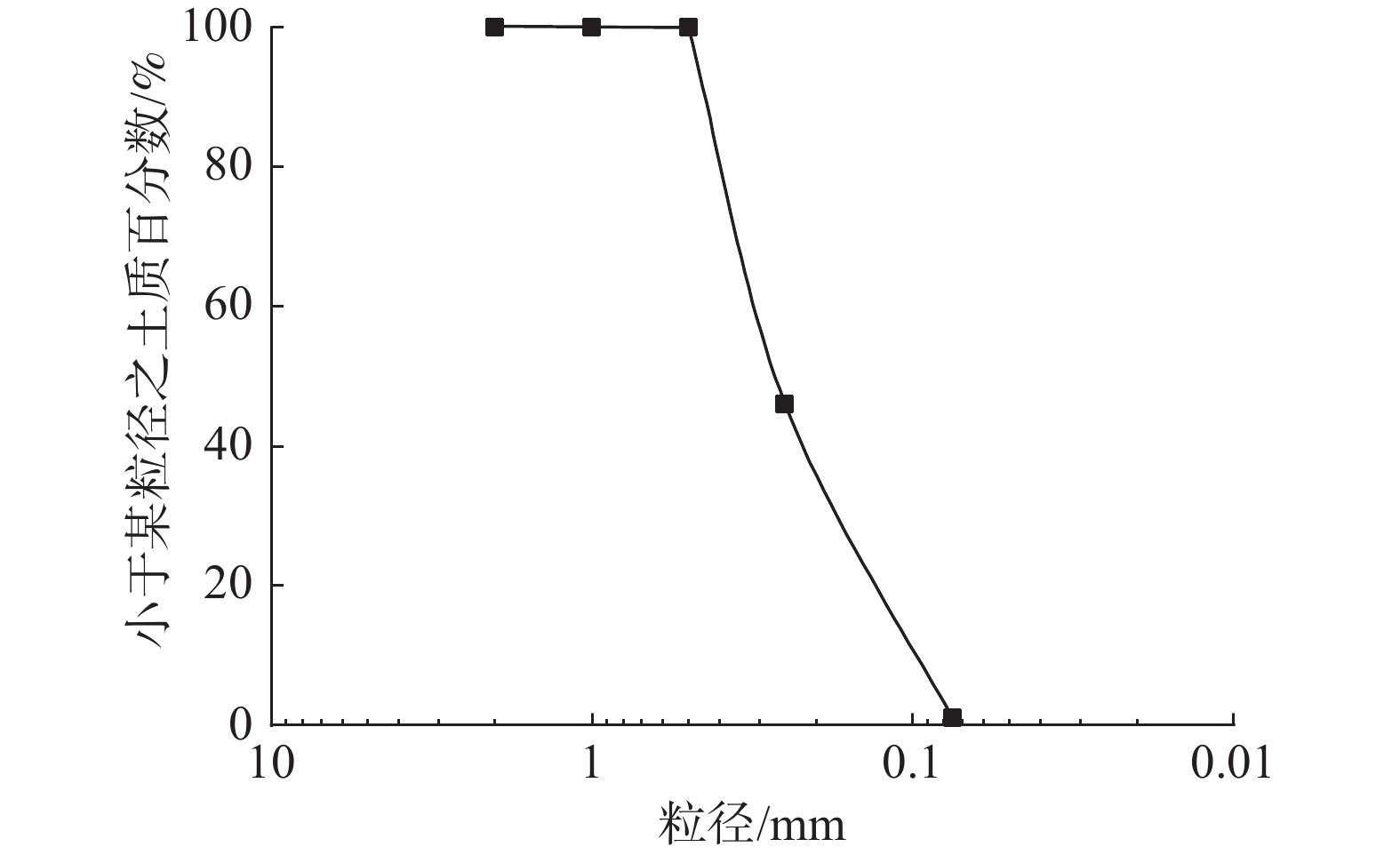
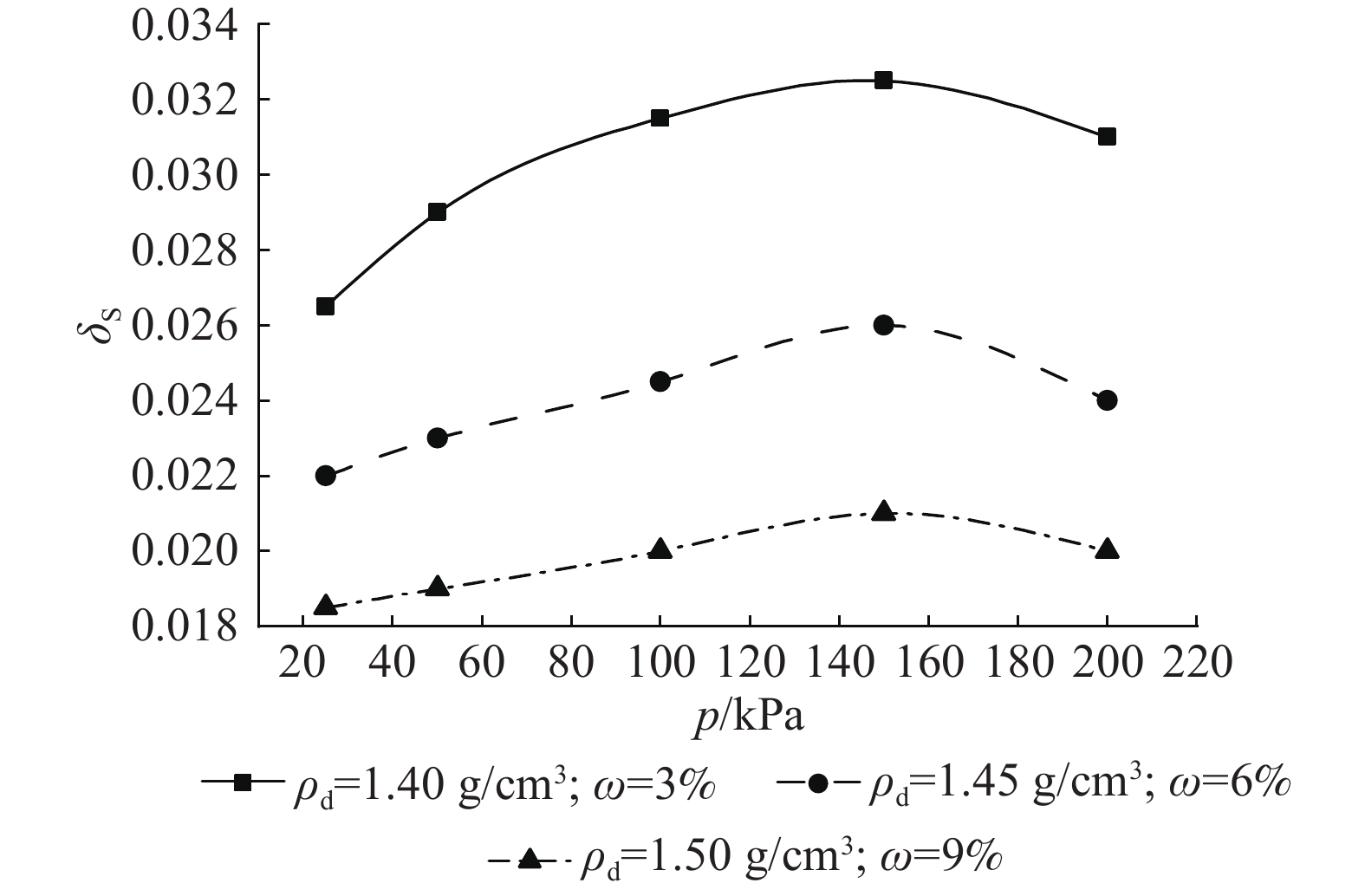


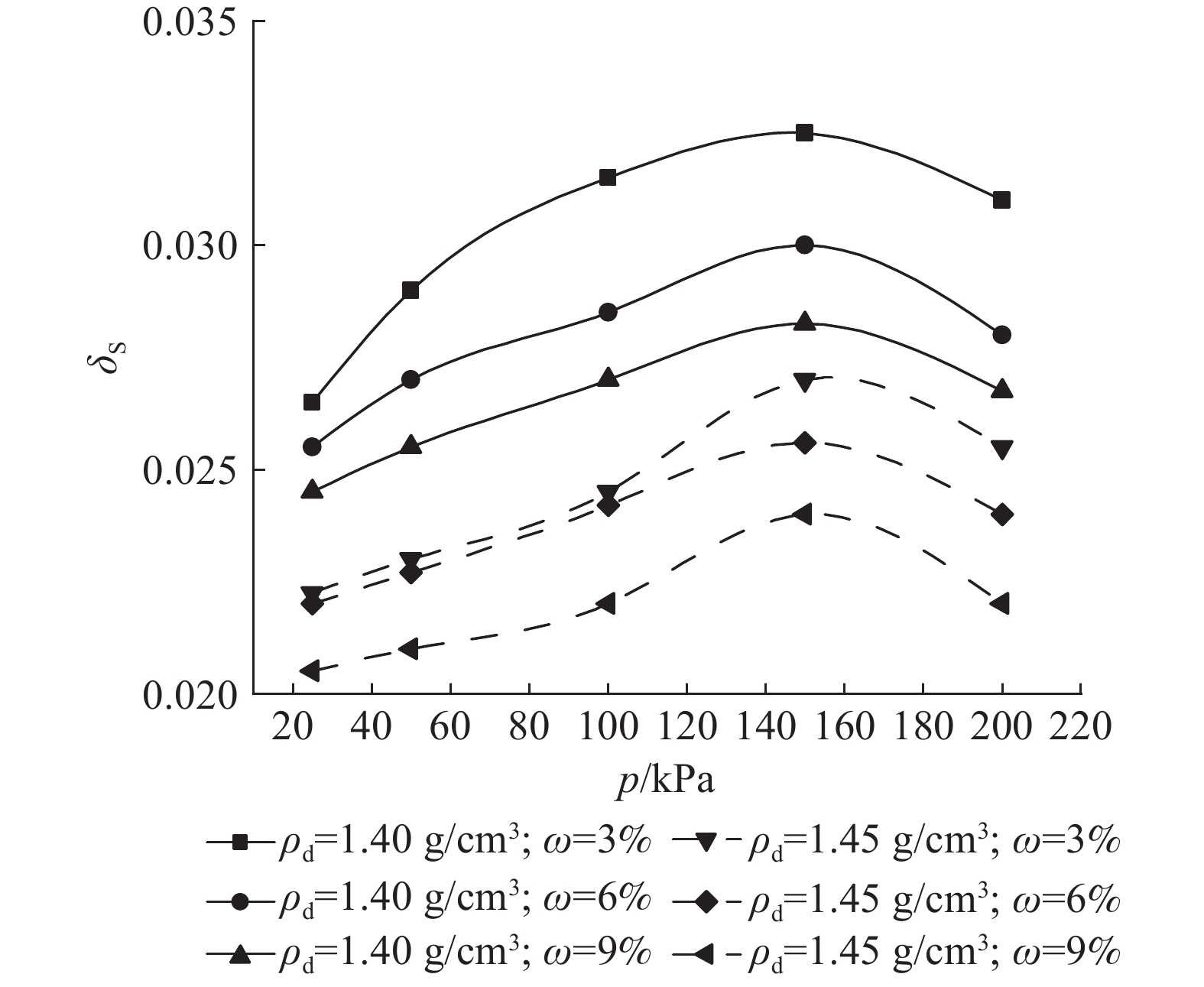


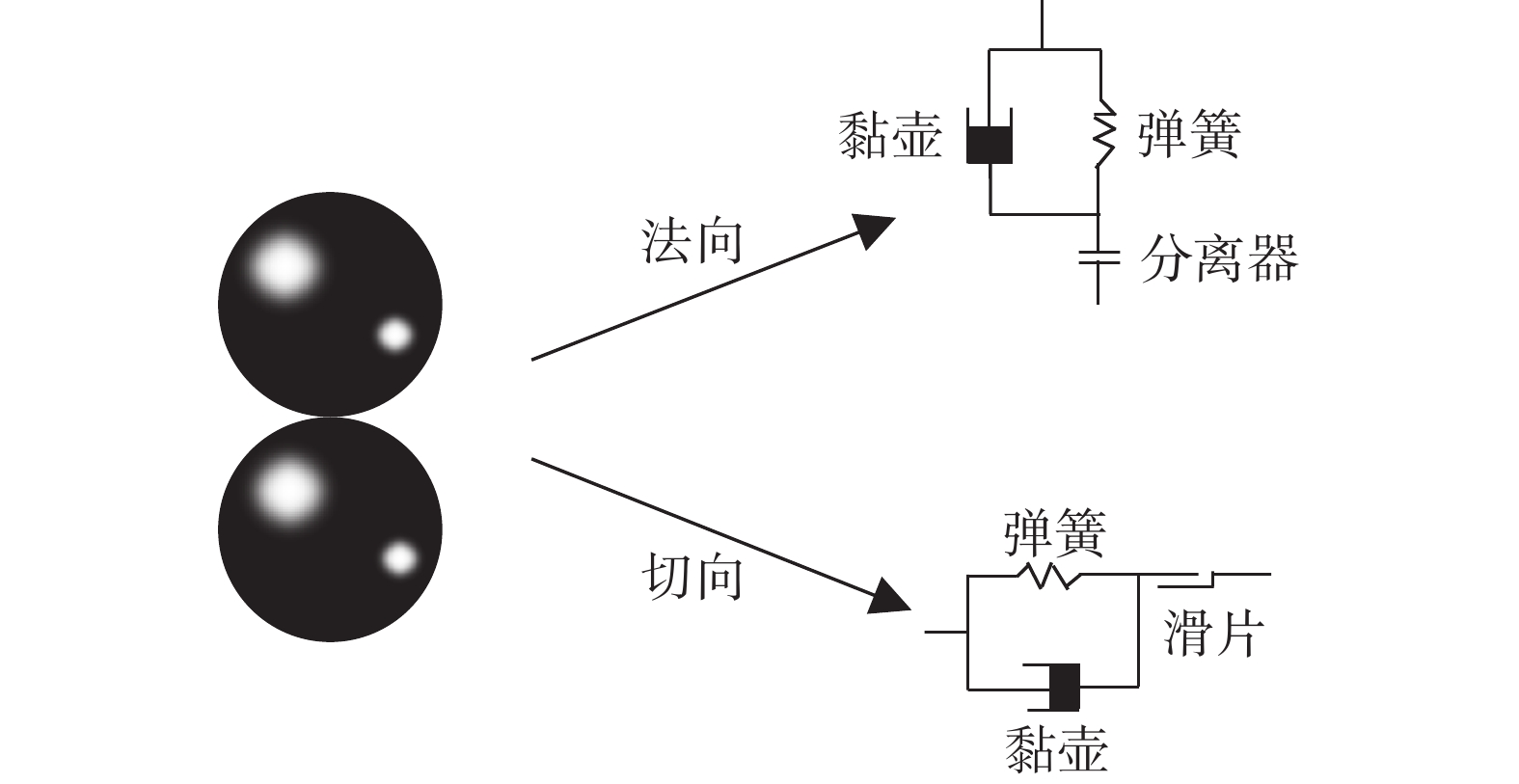
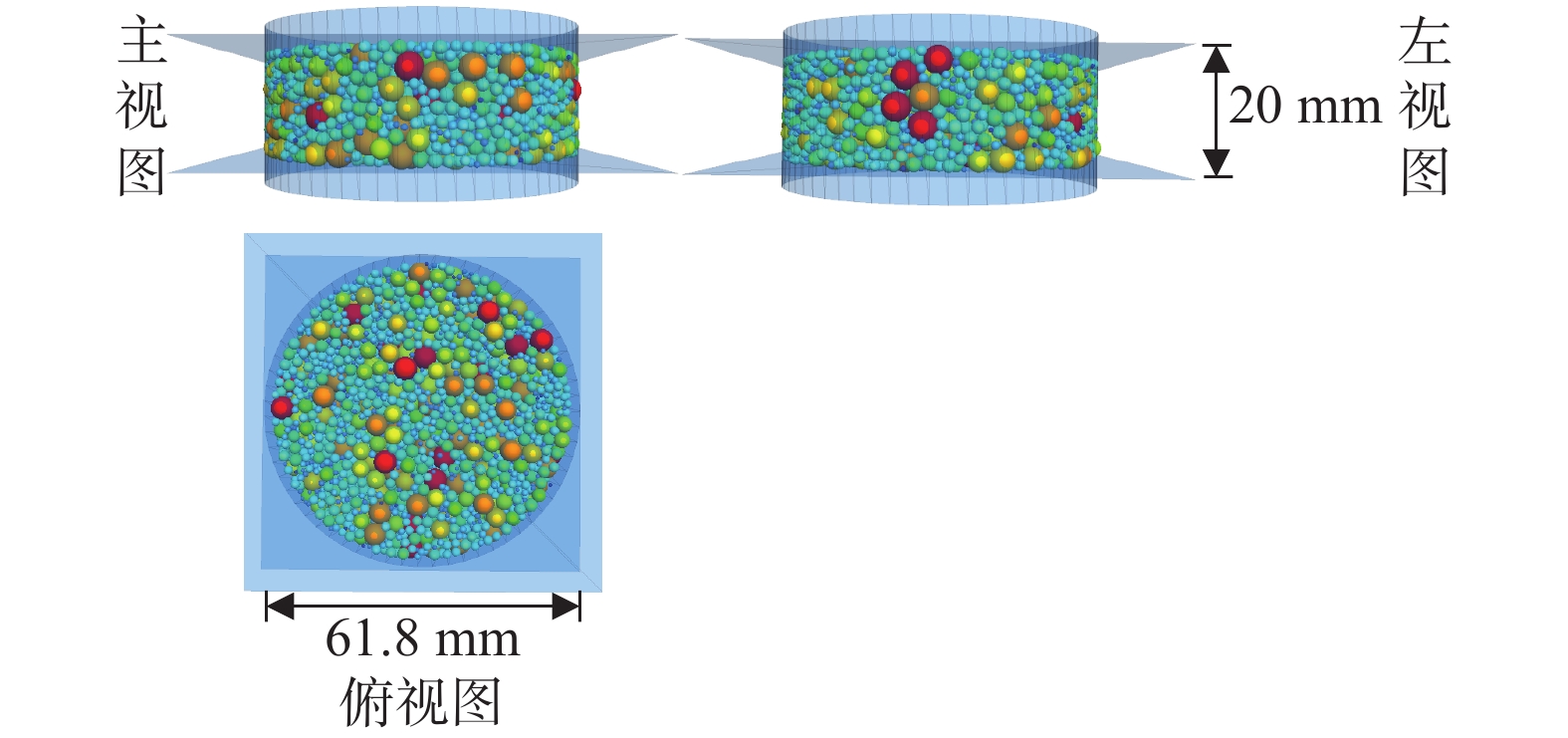
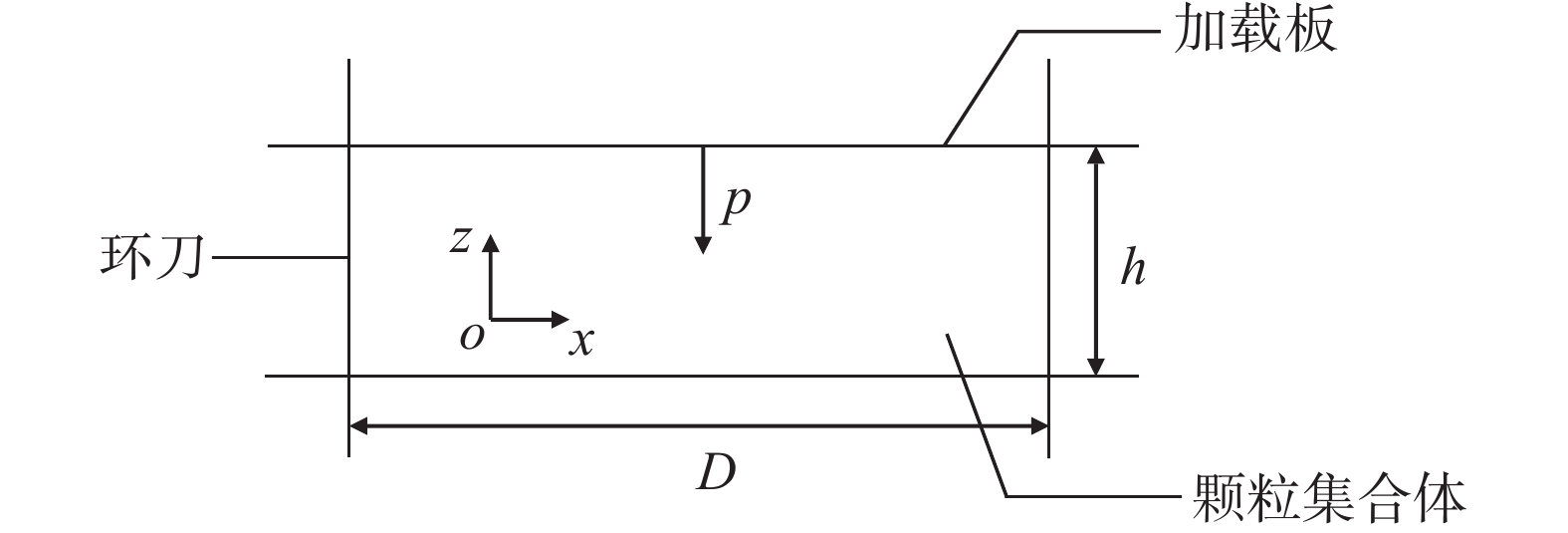
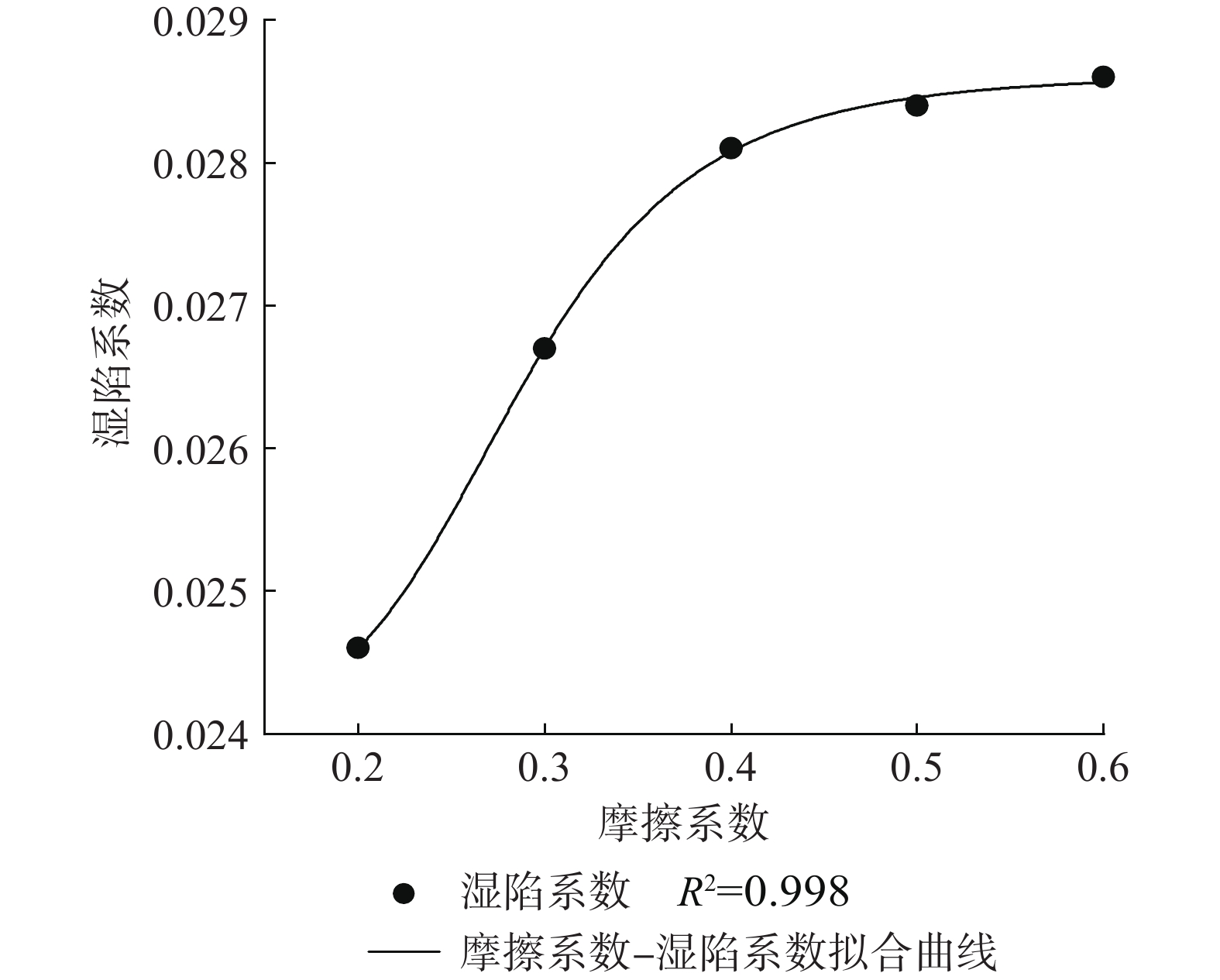
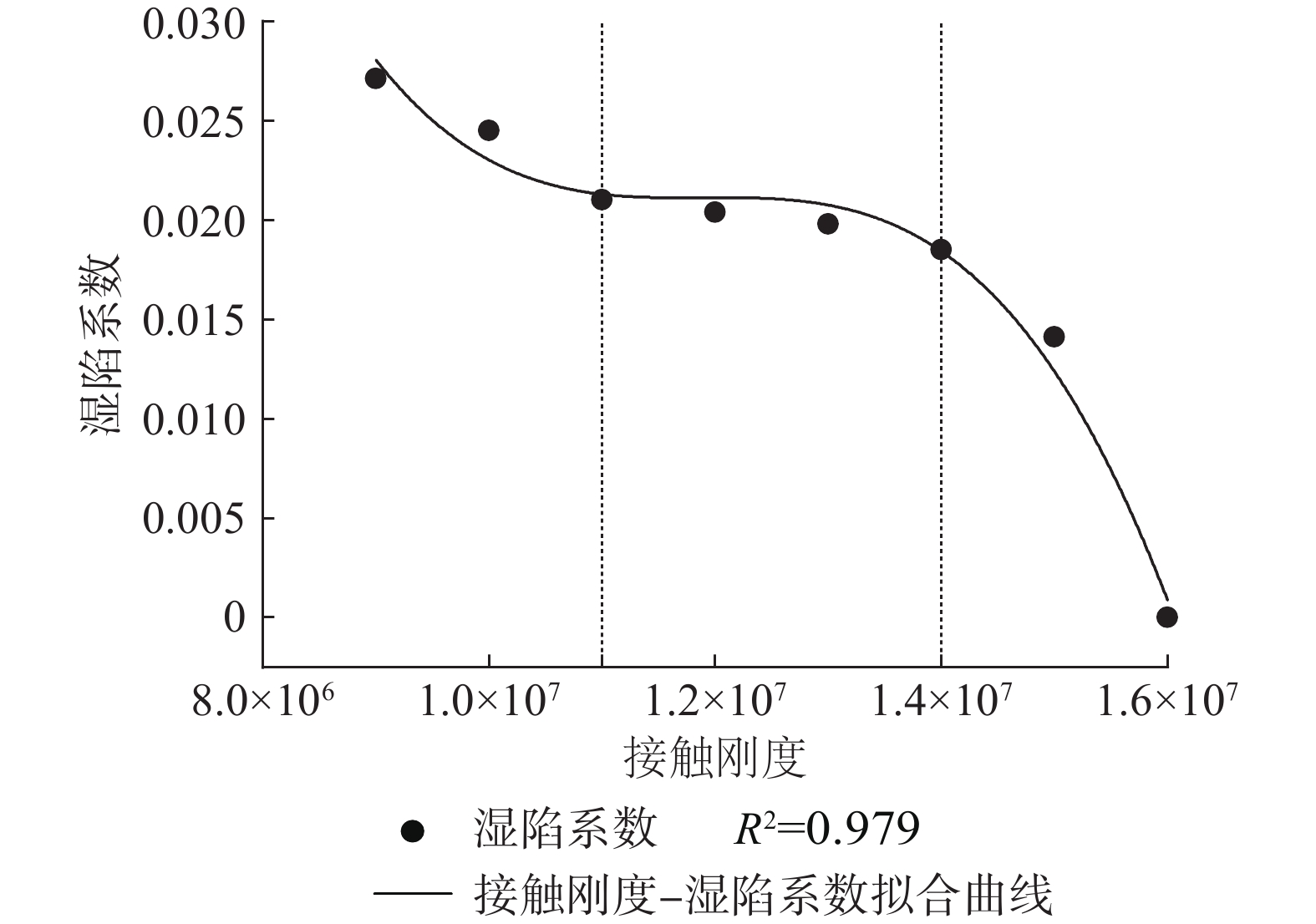
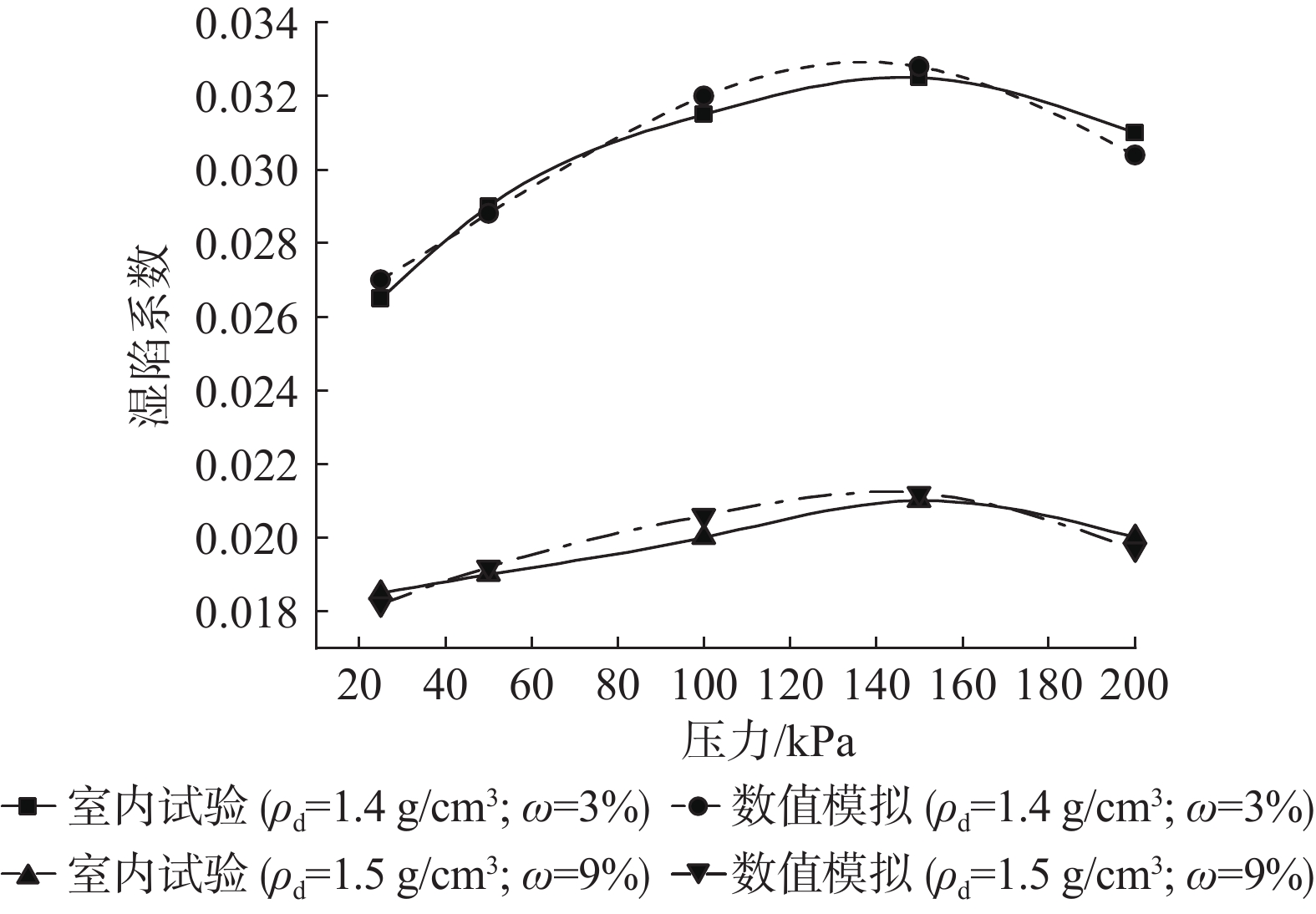





 邮件订阅
邮件订阅 RSS
RSS